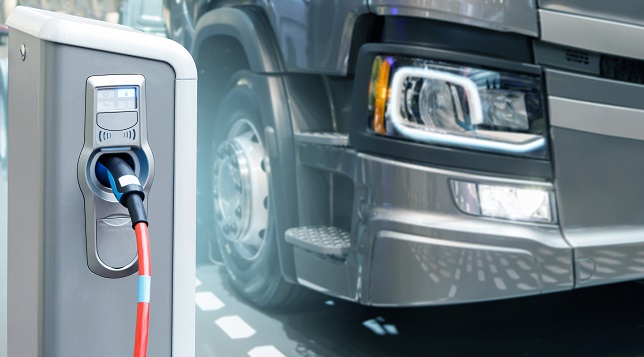Fleet telematics playing an important role to facilitate EV adoption in India

India’s transportation & logistics sector is currently in the midst of a shift with the rise of connected and automated vehicles reshaping the industry. In line with broader sustainability commitments, fleet electrification also has a critical role to play in this transition.
The industry’s electrification efforts can be traced back to 2015 when the government launched a three-year scheme – Faster Adoption and Manufacturing of Electric Vehicles (FAME-I). The scheme was designed to create demand, roll out pilot projects, build technology platforms and charging infrastructure. This was propelled with a more recent launch of FAME-II, to further incentivize commercial vehicle buyers who decide to switch over to cleaner and more sustainable transportation.
Players in the transportation & logistics industry naturally embraced the opportunity. Driven by the promise of carbon reduction targets, reduced business costs and customer demand for eco-friendly solutions, some of the largest e-commerce brands, ride-hailing services and fleet management companies have already announced substantial investments to pivot to EV usage for their fleet operations.
As an example, one of the largest global e-commerce companies recently rolled-out electrification of its last-mile delivery fleet to reduce dependence on non-renewable resources. In another instance, a ride-hailing operator in India confirmed the deployment of over 1000 EVs in the coming months.
Despite the initial promise, slow update in fleet electrification
Despite an increasing interest in fleet electrification, the uptake of electric commercial vehicles is slower than anticipated. This can be attributed to multiple factors including high costs of ownership, lack of charging infrastructure, dynamic regulatory environment and poor information around vehicle characteristics (e.g., life duration, model variety, charging time, battery range, etc.).
Given these challenges, any organization’s transition to EVs will depend on how effectively it can monitor and manage these vehicles, and this is where the latest innovations around vehicle technologies can play a critical role.
Telematics can assist in the first assessment of compatibility to help organizations in their development and implementation of a successful EV strategy while also allowing them to work with existing infrastructure.
Telematics: a possible solution to overcome barriers in fleet electrification
Telematics at its core makes use of Geographic Positioning System (GPS), on-board sensors, and real-time diagnostic tools to visualize a vehicle’s movement on a map.
With telematics, fleet management companies can bring in real-time insights into their operations, thus enabling effective route management, benchmarking vehicle utilization, monitoring driver behaviours throughout the first-middle-last mile deliveries. This ultimately brings in operational efficiencies and thereby transforms fleet operations.
We have outlined a few ways how we think telematics can enable the electrification of businesses’ fleet through telematics.
Integrating EVs into the existing fleet
Telematics solutions embedded with sensors and engine diagnostics in existing internal combustion engine (ICE) vehicles, can provide real-time insights on vehicle routes. This can include information on delays, traffic conditions, accident-prone areas and vehicle performance indicators such as mileage, aggressive acceleration, etc.
These insights can help evaluate whether EVs can complete these journeys in a single charge. The data can then be used to identify which current ICE vehicles can be replaced by electric fleets. The mileage data collected can help calculate potential fuel savings the company can expect by bringing in more EVs.
EV-specific vehicle telemetry could thus help companies make informed decisions about whether electrification will lower costs and help meet carbon-emission targets.
Managing charging infrastructure and priorities
The lack of charging infrastructure is one of the main reasons behind the slower pace of e-mobility adoption in the commercial vehicle segment. With telematics inbuilt with location-enriched APIs and geocoded solutions, fleet managers can layer the incoming information on enterprise-grade maps and help drivers identify available public charging points.
Fleet telemetry uses plug-and-play devices to collect multiple data feeds in real-time and generate in-vehicle alerts with accurate calculations of the true range left in vehicle batteries. With this data, fleet operators can ensure fewer vehicle breakdowns and better utilization of EVs in their fleets. They can also anticipate flat batteries and if an alternative vehicle needs to be dispatched.
Reshaping road safety and model driving behaviours
As companies evolve to EVs, telematics will play a significant role in reshaping road safety and model ideal driving habits. Although EVs are very similar to conventional vehicles in their make-up, they require a significant change in driving behaviour.
Telematics can help identify risky driving behaviors, spot areas for improvement and empower drivers to adopt secure, safe, and eco-driving techniques. For example, fleet managers can analyse the data incoming from a driver’s phone to understand acceleration and braking patterns e.g., on the highway or at an intersection. This data provides a realistic picture of drivers’ decisions and also helps understand the impact on battery usage or on vehicle parts wearing down quickly.
Future-proofing business against regulatory uncertainty
Cities worldwide are aiming for vehicle-free transportation to reduce air pollution and improve the safety of their citizens as climate change and environmental concerns continue to grow. For example, the Delhi Government has made it illegal to drive 15-year-old petrol and 10-year-old diesel automobiles in the Delhi National Capital Region (NCR). More cities are anticipated to follow this trend.
In this case, telematics can help fleet managers identify which ICE vehicles in their fleet are approaching future exclusion zones and replace them with EVs without disrupting business operations.
Exciting greener times ahead
There’s never been a better time for fleet electrification than now, with an increase in the number of EVs in the market, in addition to increased government support, decreasing costs of technology and increased consumer inclination for all things eco-friendly. If transportation and logistics providers want to stay relevant and competitive, they must reassess their goals as the need for a more sustainable and greener world grows louder.
Author:

Abhijit Sengupta
Director and Head of Business, India, and Southeast Asia
HERE Technologies
Abhijit Sengupta is the Director and Head of Business, India, & Southeast Asia at HERE Technologies. Based out of Singapore, Abhijit brings over two decades of experience in Sales and Business Development, Product Management and Product Operations. He has been driving customer successes in the B2B and B2C segments with market-leading organizations in India and Southeast Asia.
Published in Telematics Wire





